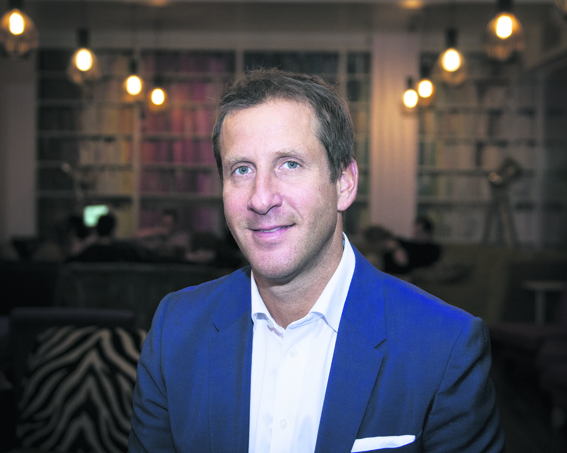Profiting from creative tension: MediaCom’s Josh Krichefski talks Coca-Cola, DNA and short-form video

"People in advertising have always worked long hours, but I don’t think that is necessary to deliver great work,” says Josh Krichefski, MediaCom UK’s new chief executive. “You won’t get a promotion here for working late,” he adds. Last year, the agency launched a programme called Project Blend to allow employees to talk with their managers about a way of working which best suits their needs. “We assume that other people want to live and work in the way we do. It’s not until we talk about these things that we find out the truth.”
The ability of technology to empower agencies and brands clearly interests Krichefski, who took over from Karen Blackett at the start of this year. “Last year we set up sensors in Cancer Research stores to allow shoppers to tap their contactless cards to make a £2 donation,” he says. “It was really successful.”
Krichefski tells City A.M. why media agencies have the edge on creative shops, and why he is excited about the prospects for out-of-home.
What do media agencies need more – specialists or generalists?
I consider myself to be a media generalist. I have a digital background, but I’ve also done media buying and planning. But I think that the polarisation of art and science within agencies will become more defined. We’ll hire increasing numbers of people who are either mathematicians and data scientists, or who are creative specialists.
Back in the 70s and 80s, agencies were full-service. There were ad agencies which also bought and planned media. It’s a peculiar time now, because creative and media agencies are both able to do what the client wants. They’re competing for the same accounts, and it’s creating an interesting tension. But media agencies are far better positioned because media is much more important than it was back then. We have to be experts in TV, radio, cinema and digital channels like search engine optimisation, pay per click, social media, online video and more.
And our proximity to data allows us to measure everything that’s going on and how successfully we’re delivering the client’s business objectives, and it can inform our creativity both within and outside digital channels.
How do you mean?
Data allows media professionals to learn what people are actually doing, rather than what they claim they are doing. We look at quantitative data, for example, to examine how a brand’s range of products sell differently across the UK. How we implement that campaign will vary by locality, and we will use different creative executions to reflect the interests of different audiences.
MediaCom has six offices around the country because we’re interested in genuine representation. Data can influence creative as well. We used Spotify’s listening data in a campaign for Bose to identify new musical trends, and teamed up with Vice and Facebook to shape and target the message to consumers.
At Channel 4 Upfronts, you said that broadcasters need to pay attention to how short-form content platforms like YouTube are communicating with audiences. What can they learn?
TV isn’t going anywhere. It is as important for people who want to be entertained as it is for marketers who want to reach those people. And broadcast and tech firms are evolving in a way which reflects that with products like Sky Q, which allows you to pause a TV show and continue watching it on your iPad.
But it’s not right to be dismissive of platforms like YouTube. Audiences are spending more time consuming shorter form content through such channels, and any broadcaster trying to increase its footprint in digital needs to think about commissioning shorter form content on top. You need to follow the consumer. And Channel 4, for example, is already doing that.
Which areas excite you most for this year?
Personalisation has certainly got potential. But there’s a delicate balance between being relevant and creepy. I don’t like the way advertisers use data to follow you around. But using personalisation in your own media properties is different and can be quite compelling. Once a consumer arrives at your site, leveraging data to understand what they are interested in buying and to send tailored messaging to them can be helpful.
The Share a Coke campaign we did with Channel 4 was groundbreaking. Because the audience had already opted into Channel 4’s on-demand service, we were able to serve them an ad with their name on a Coke bottle, allowing us to bring the personalised bottles idea to life in the broadcast arena. We won a Cannes Lion for it because it was a neat stunt which came from a place of love.
Mobile will become an increasing centre point for campaigns, and Facebook is winning the war in mobile at present. I was lucky enough to judge the Cannes Lions last year, and the most exciting work I saw combined mobile with digital out-of-home advertising. As more of the sheetage on billboards is becoming digital, brands are able to communicate to a collective group of consumers in real-time without the messaging being aimed at a single passer-by too directly.
There have also been imaginative uses of DNA. Ogilvy & Mather Group Hong Kong’s Face Of Litter campaign took small traces of DNA from litter which had been dropped and a lab used them to create a mock-up of what the offender looked like. I don’t know how accurate it was, but it was very clever.